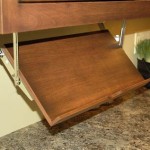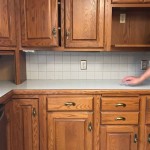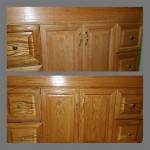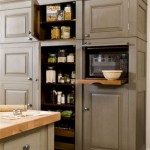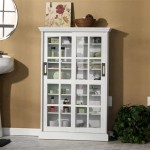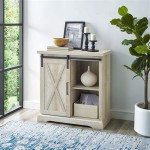```html
Make The Most Of Your Cabinet Space With A Wine Rack
Effective utilization of cabinet space is a common challenge in many homes. Kitchens, in particular, often suffer from limited storage, leading to cluttered countertops and disorganized shelves. Adding a wine rack to your existing cabinetry can be a significant step towards optimizing space and improving the overall flow and functionality of the area. Strategic placement and selection of the right wine rack design can create a dedicated storage solution for wine bottles, freeing up valuable space for other essentials. This article will explore how to maximize cabinet space using wine racks, discussing key considerations and offering practical solutions for achieving a well-organized and aesthetically pleasing storage environment.
Before investing in a wine rack, it is crucial to assess the specific needs and limitations of your existing cabinet space. Consider the dimensions of the cabinets, the number of wine bottles you typically store, and the overall aesthetic you wish to achieve. A careful evaluation will ensure that the chosen wine rack is both functional and visually appealing, seamlessly integrating into the existing cabinetry. Ignoring these factors can lead to a poorly fitted rack that wastes space and detracts from the overall organization.
Planning and Measurement for Optimal Fit
The initial stage involves meticulous planning. Begin by emptying the cabinet intended for wine storage. This allows for accurate measurement of the interior dimensions, including height, width, and depth. Pay close attention to any obstructions, such as pipes or electrical wiring, that may affect the placement of the wine rack. Create a detailed sketch of the cabinet interior, noting all relevant measurements. This blueprint will serve as a guide when selecting or designing a wine rack.
Consider the types of wine bottles you typically store. Different bottle shapes and sizes require varying spacing within the wine rack. For example, Champagne bottles are generally wider than standard wine bottles and may require larger compartments. If you have a diverse collection of wine bottles, opt for a wine rack with adjustable shelving or compartments to accommodate different sizes.
Furthermore, assess the weight capacity of the cabinet shelves. Wine bottles can be heavy, especially when fully stocked. Ensure that the shelves are sturdy enough to support the added weight of the wine rack and the bottles it contains. If the shelves are flimsy, consider reinforcing them with additional supports or replacing them with stronger materials.
Choosing the Right Wine Rack Style and Material
Wine racks are available in a wide range of styles and materials, each offering unique advantages and disadvantages. The ideal choice depends on your personal preferences, the style of your kitchen or bar area, and the available budget.
Traditional wooden wine racks offer a classic and elegant look. They are typically made from hardwoods such as oak, maple, or cherry, and can be stained or painted to match existing cabinetry. Wooden wine racks are durable and can provide excellent support for wine bottles. However, they may be more expensive than other options and can be susceptible to moisture damage.
Metal wine racks offer a modern and contemporary aesthetic. They are often made from stainless steel, wrought iron, or powder-coated steel. Metal wine racks are durable, easy to clean, and resistant to moisture damage. They can be a more affordable option than wooden wine racks, but may not be as visually appealing to some.
Plastic wine racks are a budget-friendly option that is lightweight and easy to install. They are available in a variety of colors and styles, but may not be as durable or aesthetically pleasing as wooden or metal wine racks. Plastic wine racks are also less resistant to heat and may warp or melt in high temperatures.
Modular wine racks offer flexibility and customization. They consist of individual units that can be stacked or arranged to create a wine rack that fits your specific needs. Modular wine racks are available in a variety of materials, including wood, metal, and plastic.
Consider the overall aesthetic of your kitchen or bar area when choosing a wine rack style. If you have a traditional kitchen, a wooden wine rack may be the best choice. If you have a modern kitchen, a metal wine rack may be more appropriate. Choose a wine rack that complements the existing décor and enhances the overall visual appeal of the space.
Installation and Organization Techniques
Once you have chosen a wine rack, the next step is to install it properly. Follow the manufacturer's instructions carefully to ensure that the wine rack is securely mounted and stable.
For wooden wine racks, use screws that are long enough to penetrate the cabinet walls or shelves, but not so long that they protrude through the other side. Pre-drill pilot holes to prevent the wood from splitting. Use a level to ensure that the wine rack is installed straight and level.
For metal wine racks, use anchors or wall plugs if necessary to provide additional support. Ensure that the anchors are rated to support the weight of the wine rack and the wine bottles it will hold.
Once the wine rack is installed, organize your wine bottles in a logical and efficient manner. Consider organizing the bottles by type, vintage, or region. Label the shelves or compartments to make it easier to find the desired bottle. Store bottles horizontally to keep the cork moist and prevent it from drying out, which can lead to oxidation of the wine.
Utilize the surrounding cabinet space to store wine accessories, such as corkscrews, wine glasses, and decanters. Designate specific shelves or drawers for these items to keep them organized and easily accessible. Consider using drawer dividers or organizers to maximize space and prevent items from shifting around.
Proper lighting can enhance the visual appeal of your wine storage and make it easier to find the desired bottle. Install LED strip lights or puck lights inside the cabinet to illuminate the wine rack. Choose lighting that is low in heat to avoid damaging the wine.
Finally, regularly clean and maintain the wine rack to keep it in good condition. Dust the shelves and bottles regularly to prevent buildup of dirt and debris. Wipe down the wine rack with a damp cloth to remove any spills or stains. Inspect the wine rack periodically for any signs of damage or wear and tear.
By carefully planning, selecting the right wine rack, and implementing effective organization techniques, homeowners can significantly enhance the functionality and aesthetic appeal of their cabinet space dedicated to wine storage. This proactive approach not only maximizes storage capacity but also contributes to a more organized and visually pleasing living environment.
```
21 Wine Room Cellar Design Ideas For Home Storage

Living Room Wine Cabinet Built Ins How To Nest For Less

Wine Rack Custom Set Ups For Narrow Spaces

Wine Cabinet Vs Coolers

21 Wine Room Cellar Design Ideas For Home Storage

Diy Built In Wine Rack How To The Reveal Lone Oak Design Co

Diy Built In Wine Rack How To The Reveal Lone Oak Design Co

Creative Storage Solutions For The Kitchen Cabinet World Of Pa

The Best Home Bar Cabinets Wine Enthusiast

Integrate A Custom Bar And Media Center In Your Saratoga Home For An Entertainment Hotspot
Related Posts


